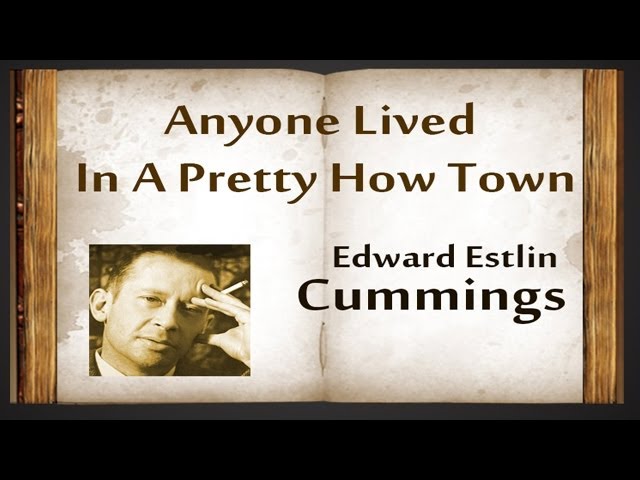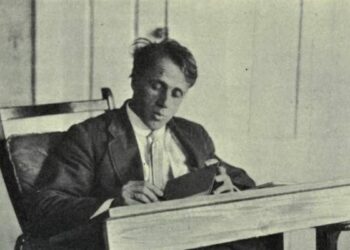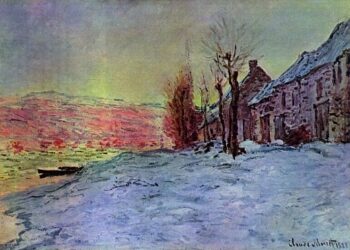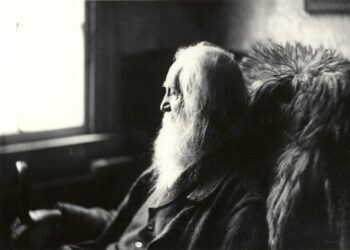Table of Contents
ToggleIntroduction
Anyone lived In A Pretty How Town Summary By E. E. Cummings E. E. Cummings is renowned for his innovative use of language, structure, and syntax, and his poem “anyone lived in a pretty how town” is a prime example of his creative genius. This poem is a multifaceted exploration of life, love, and the cyclical nature of existence. By employing unconventional grammar, fragmented syntax, and a playful tone, Cummings creates a unique portrait of humanity’s shared experiences while questioning societal norms and expectations.
The poem presents a narrative about “anyone,” an individual who lives in a small town, and their relationship with “noone,” a character who symbolizes love and individuality. Through these characters, Cummings reflects on themes of love, mortality, conformity, and the passage of time.
This discussion offers an in-depth summary of the poem, an exploration of its themes, and frequently asked questions, providing readers with a comprehensive understanding of one of E. E. Cummings’ most celebrated works.
Summary of “anyone lived in a pretty how town”
E. E. Cummings’ “anyone lived in a pretty how town” tells the story of a man named “anyone” and his experiences in a small, conformist town. The poem is an allegorical depiction of universal life cycles, blending everyday experiences with profound philosophical insights.
Stanza-by-Stanza Summary
- Stanza 1
The poem begins by introducing “anyone,” a man living in a small, seemingly idyllic town. The townspeople are depicted as indifferent to “anyone,” highlighting their conformity and lack of individuality. “Anyone” lives a unique and joyful life, defying societal norms, but his distinctiveness goes unnoticed by the townsfolk.
Read more
- Stanza 2
Cummings introduces “noone,” a woman who represents love and individualism. She admires and supports “anyone” for his authentic existence. Their relationship becomes a symbol of genuine connection in contrast to the monotony of the town. - Stanza 3
The passage of time is marked through the repetition of the seasons—“spring summer autumn winter.” The cyclical nature of life and death becomes a central motif, mirroring the rhythms of nature and human existence. - Stanza 4
The townspeople, described as “women and men (both little and small),” lead lives dictated by societal expectations. They conform to routines, marry, and die, but their lives lack individuality and deeper meaning. - Stanza 5
The love between “anyone” and “noone” deepens. Their relationship is contrasted with the superficial lives of the townspeople, emphasizing the importance of personal connections and emotional depth. - Stanza 6
The poem takes a somber turn as “anyone” dies. “Noone” grieves his loss and eventually passes away as well. Their love, however, transcends death, symbolizing the enduring power of genuine human connection. - Stanza 7
The townspeople bury “anyone” and “noone,” continuing their routine, unaffected by the loss. Their indifference underscores the dehumanizing effects of conformity and societal expectations. - Stanza 8
The poem concludes with the repetition of the seasons and the cyclical nature of life. “Anyone” and “noone” remain symbols of individuality and love, while the townsfolk’s lives continue unchanged.

Themes in “anyone lived in a pretty how town”
1. Individuality vs. Conformity
The poem juxtaposes the individuality of “anyone” and “noone” with the conformity of the townspeople. While “anyone” and “noone” live authentically, the townsfolk are depicted as indistinct, adhering to societal norms without questioning their purpose.
Read more
2. Love and Human Connection
The relationship between “anyone” and “noone” symbolizes the transformative power of love. Their bond stands out as a beacon of authenticity in a world dominated by superficiality.Anyone lived In A Pretty How Town Summary By E. E. Cummings
3. The Passage of Time
Cummings uses the repetition of seasons to highlight the cyclical nature of time and its impact on human lives. This motif underscores the inevitability of change, growth, and death.
4. Life and Death
The poem reflects on the inevitability of death and its role in the human experience. “Anyone” and “noone” accept their mortality, finding meaning in their love, while the townspeople live unexamined lives, oblivious to life’s deeper truths.
5. Societal Indifference
The townsfolk’s indifference to “anyone” and “noone” highlights the alienation that can result from societal conformity. Their inability to recognize individuality underscores the dehumanizing effects of societal expectations.
6. The Cyclical Nature of Existence
Cummings emphasizes the cyclical nature of life through recurring imagery of seasons and the repetition of daily routines. This theme reinforces the interconnectedness of life, death, and renewal.Anyone lived In A Pretty How Town Summary By E. E. Cummings
7. Nonlinear Narrative and Language
The poem’s unconventional structure and fragmented language reflect the complexity of human experiences and emotions. Cummings uses this approach to challenge traditional poetic norms and encourage readers to think beyond conventional interpretations.Anyone lived In A Pretty How Town Summary By E. E. Cummings

Conclusion
E. E. Cummings’ “anyone lived in a pretty how town” is a profound exploration of individuality, love, and the human condition. Through its unconventional structure and timeless themes, the poem challenges readers to reflect on their own lives and relationships. By celebrating authenticity and human connection, Cummings offers a poignant critique of societal conformity and a reminder of the enduring power of love.Anyone lived In A Pretty How Town Summary By E. E. Cummings
Read more
FAQ
1. What does the title of the poem mean?
The title “anyone lived in a pretty how town” reflects Cummings’ playful use of language. “Anyone” represents an individual who defies societal norms, while “pretty how town” suggests an ordinary, conformist community. The title encapsulates the tension between individuality and societal conformity.
2. Who are “anyone” and “noone”?
“Anyone” and “noone” are symbolic characters representing individuality and authentic human connection. Their relationship contrasts with the superficial lives of the townsfolk, highlighting themes of love and the importance of genuine emotional bonds.
3. Why does Cummings use unconventional grammar and syntax?
Cummings’ use of unconventional grammar and syntax reflects his experimental approach to poetry. This style encourages readers to interpret the poem creatively, emphasizing its themes and challenging traditional notions of language and structure.
4. What is the significance of the seasons in the poem?
The seasons symbolize the cyclical nature of life, mirroring human experiences of growth, change, and renewal. Their repetition underscores the inevitability of time’s passage and the interconnectedness of all living things.
5. How does the poem critique societal norms?
The townsfolk are portrayed as conformist and indifferent, leading lives dictated by societal expectations. Cummings critiques this lack of individuality and emotional depth, contrasting it with the authentic lives of “anyone” and “noone.”
6. What role does love play in the poem?
Love is depicted as a transformative and enduring force. The relationship between “anyone” and “noone” transcends societal indifference and even death, emphasizing the profound impact of genuine human connection.
7. How does the poem reflect Cummings’ broader themes?
“anyone lived in a pretty how town” encapsulates many of Cummings’ recurring themes, including individuality, love, and the critique of societal norms. His experimental style and philosophical insights are hallmarks of his poetic vision.
Related
Analyze the use of metaphor in E.E. Cummings’ poetryIn "English Literature"
I Carry Your Heart with Me Summary by E.E. CummingsIn "Poems"
Facts about E.E. Cummings Of American PoetIn "Biography"




